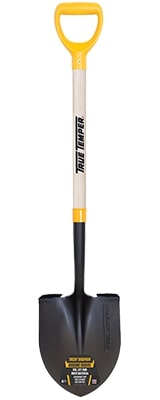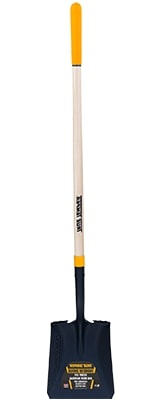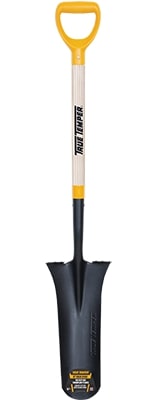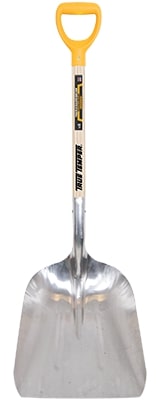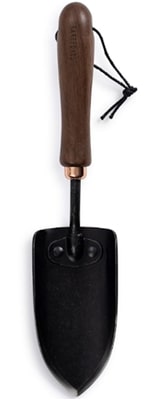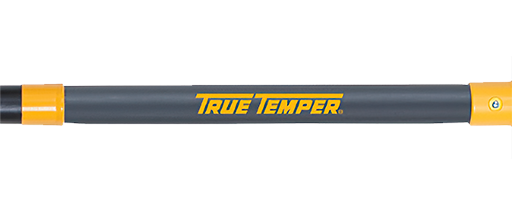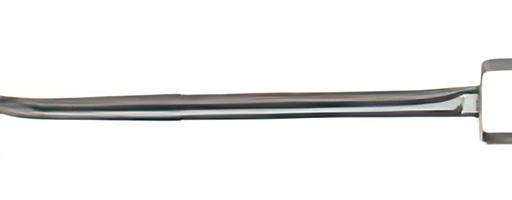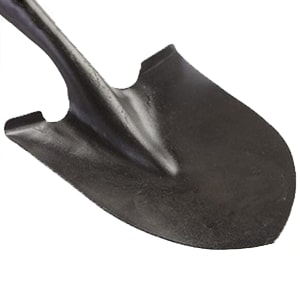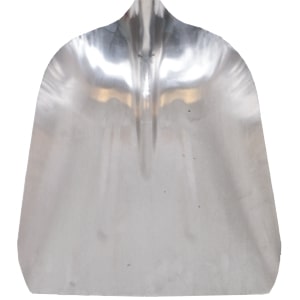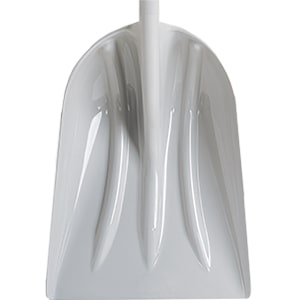- Show results for
- Share
How to Choose the Right Shovel?
Resource Description

Even though a shovel is considered a low-tech tool, it is often impossible to work without it in the garden or on the construction site, and just to remove snow from paths. Everyone is used to the idea that a shovel is the simplest garden tool, but new technologies are also developing in this area.
A garden shovel, spade, or scoop is a hand-held tool for working with soil and bulk materials. It consists of a blade, which is attached to the handle (shaft). In the past, shovels were made of wood, bone, or moose horn. Over time, the scoop began to be ironshod, and even later, an all-metal version appeared. Nowadays, there are many varieties of this instrument. Shovels have become more convenient, lighter, and more reliable.
But how to choose the right model among such a wide variety? To do this, you need to know a few things about choosing a shovel, which we will discuss today.
Spade, Shovel, Scoop - What’s The Difference?
First and foremost, let's clarify the definitions.
- A Spade typically has flat or almost flat blades and a long handle, making it ideal for cutting and scraping hard soil (i.e., outlining a garden bed, beginning a trench).
- A shovel, in its turn, is wider and more concave with a rounded or curved tip making it ideal for digging and scooping debris. The shovel is better to work with more loose, fluid-like soils.
Currently, the terms shovel and spade are interchangeable. They are alike in design and are used for similar tasks.
- A Scoop is the shortest and smallest one. It has a deep bowl-shaped end. It is perfect for soft substances or powders While a garden shovel is a bit like a scoop, a scoop shovel is something radically different. We invite you to continue reading to better understand everything.
Most Common Types Of Shovels
First, a rule of thumb: there are no universal shovels!
There are many types of shovels with different blades and handles for different jobs. Let's take a look at the most common of them:
Round Point ShovelsIt is a standard shovel for digging, scooping, transporting, and other similar work around the garden. It has a rounded end and a bowl-shaped shaft. It is convenient for hard penetrating harder soil and transporting heavy loads. |
|
Square Point ShovelsA square-pointed shovel is also known as a coal or barn shovel. It is commonly used when light materials like snow or fine soils such as sand. Its rectangular shape is ideal for leveling soil edges near paths or for aligning ditches. The flat shaft comes in handy when clearing small piles in the garden. |
|
Trenching ShovelsA trench shovel is used to create ditches to supply vegetation with water. This shovel has a rectangular narrow blade with a sharp point at the tip. With it, you can easily make a deep vertical hole without touching the plants. |
|
Scoop ShovelScoop shovels differ from other types of shovels. They are easily recognizable by their wide, concave blades with a flat tip. Best suited for lifting and moving large volumes of different materials such as snow, manure, harvesting grain, or mulch. |
|
Garden TrowelsA garden trowel is a small hand-held tool used by gardeners. The name for a trowel comes from the Latin word "truella", which means "small ladle". Garden trowels usually have metal handles with wood, plastic, or rubber coating. The shovel part itself can be made of various types of metal or even plastic, sometimes the metal blades are coated or painted. This small tool is used for planting seedlings, transplanting, weeding, and digging small holes that are too small for a shovel. |
|
Handles & Blades
What Are The Types Of Shovel Handle Grips?
Typically, handle options include a standard length straight handle or a shorter D-grip. The above types of shovels can be acquired with both long and D-grip handles.
|
|
|
Long Handle |
D-grip Handle |
|
The advantage of a long handle is that the user remains in a more upright position, which is more comfortable |
D-shaped handles are very useful in tight spaces and for precision work. |
What are shovel handles made of?
The handle (or the shaft) material ranges from wood and fiberglass to steel. Choosing between them is often a matter of personal preference and budget. By all means, each material has its pros and cons. What matters is what cons you are willing to put up with.
|
|
|
|
Wooden Handles |
Fiberglass Handles |
Steel Handles |
|
With proper care, the wooden shovel handles are tough enough to last a long time. They are easy to replace if worn or damaged and minor damages can be repaired with wood glue. However, wooden handles are well known to be susceptible to weathering, cracking and splitting, and can rot in damp conditions. They can be broken relatively easily if repairs or replacements are not carried out properly. |
Fiberglass shovel handles are incredibly durable materials. They come in a variety of colors. Certain advantages over wood are obvious: they are not subject to rotting or weather conditions and do not shrink or expand when humidity changes. It is also unlikely that they will break apart on impact. Yet, if they do break, you can hardly change the handle, because fiberglass handles for replacement are hard to find. The best way out is to buy a new shovel. |
The steel handle is considered the heaviest of all shovels, and the strongest one. To a large extent, shovels with such handles are intended for industrial application, more intensive use on professional construction sites, or where the weight of the shovel is not an issue. Besides, they tend to cost less than fiberglass ones. Important! Everyone knows that steel conducts electricity, so be careful when live cables are around. |
What Are Shovel Blades Made Of?
The shovel blade (or the scoop) is the lowest part of the tool that makes direct contact with the ground. It is usually made of steel or aluminum, although in some cases it can be made of plastic or polyurethane. Shovel blades come in a wide variety of shapes and sizes, which, most likely, contributes to the difference in the types of shovels.
|
|
|
|
Steel Blade |
Aluminum Blade |
Poly Blade |
|
Steel blades are the most robust and long-lasting of all shovel blades. It is suitable for almost any kind of work:
|
Aluminum blades are more suitable for:
|
Polyurethane or poly blades are flexible, corrosion- and chemical-resistant. Such kind of blade can withstand long-term operation in the most difficult conditions and temperatures. |
Choosing The Best Option For You
You decided on the type of shovel that you need. Some shovels are used for industrial and construction applications, some in the garden and orchard, other types are indispensable during the hike and on the road. Once you have decided for what purpose you need a shovel, it becomes much easier to make a choice.
The point is, that we want you to choose shovels only of true quality. That's why we'd like to draw your attention to the globally recognized True Temper brand. True Temper shovels have been on the market for over two centuries they are made of high-quality materials.
The company's range includes four types of shovels, namely:
- Digging Shovels are the most essential, robust, and reliable garden tools for
versatile lawn, yard, and garden jobs as well as maintenance. True Temper digging models differ slightly in
the shape of the blades but are quite similar in their applications;
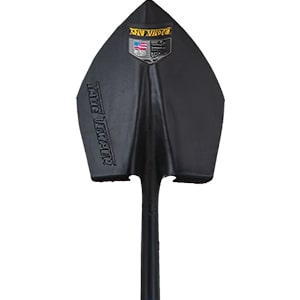
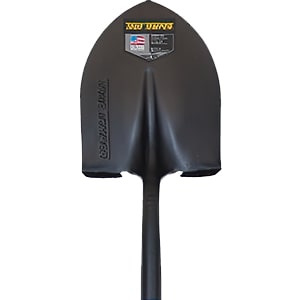
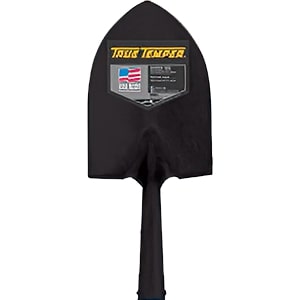
- Transfer Shovels are pretty similar tools, with the only difference in their
handles that affect the application. The Long Handle Transfer Shovel is a heavy-duty tool
for frequent landscaping and gardening requirements; suitable to transfer dirt, mulch, and gravel.
The D-Handle Transfer Shovel has so many uses that it's one of the basic tools of every
homeowner's assortment. Its unparalleled design is fine for moving garden materials, shape beds,
mix concrete, level off areas, and much more.
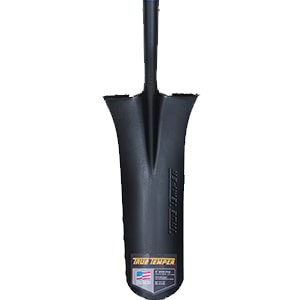
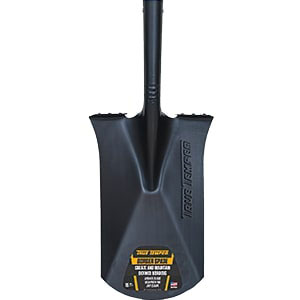
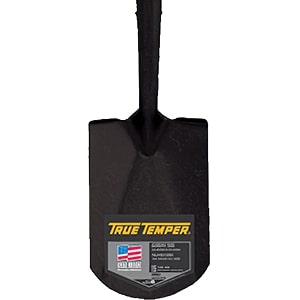
- Drain & Garden Spades - A Drain Spade performs its direct task of
digging narrow trenches and is also convenient when transplanting trees and shrubs. Garden
Spades are border and floral tools. Border Spade helps create clear boundaries in the
landscape, while Floral Spade is perfect for working in the garden in any soil condition.
The reinforcing molded ribs on blades give extra strength for more heavy-duty or large-capacity
applications;

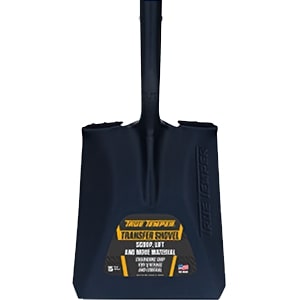
- Aluminum & Poly Scoops - An Aluminum Scoop is ideal for snow removal and
transporting all loose & bulky materials; Poly Scoop is best to work with different
granulated materials, also sturdy enough to move mulch and soil;

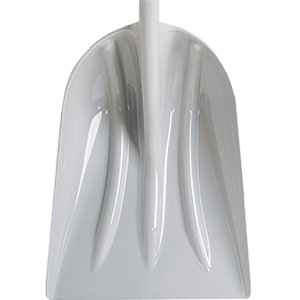
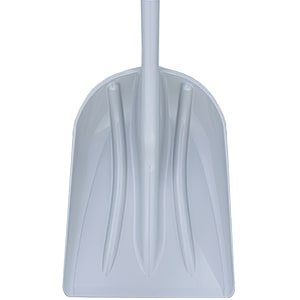
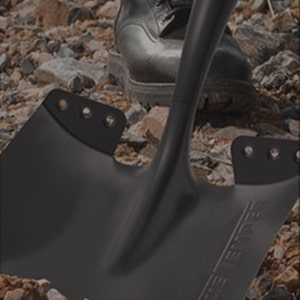
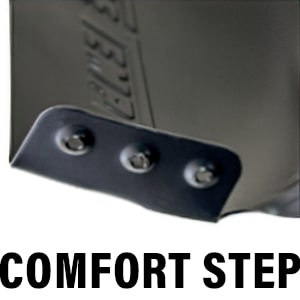
True Temper shovels comes in different variations, both with long and short handles made of hardwood or fiberglass, with straight and ergo D-shaped grips.
The design of True Temper shovels has another striking feature - a secure comfort step, placed on both sides of the top of the blade. This makes the digging experience a lot more enjoyable. Now you can forget about painful sensations in your feet.
Shovel Care & Handling Tips
Every single thing should be replaced over time. It's the same with a shovel. But great news: you can extend its service life by providing proper maintenance.
Everything is pretty simple. Do not forget your shovel in the garden to keep it out of the rain and morning dew. After any work, wash the shovel and wipe it dry. Make sure there are no cracks through which rain or snow can enter the place where your tools are. When not in use, keep it clean and away from moisture and direct sunlight.
|
There are some general tips that you may find useful in the future:
- To ensure a long service life of your shovel, treat it annually: sharpen the cutting edge, lightly sand the wood handles and wipe them down with some wood conditioning tung oil.
- Priming your shovel is kind of a good idea, especially for snow shovels. It prevents dirt, snow, etc. from sticking to the shovel, making it easier to clean up afterward.
- To make the shoveling more natural and comfortable for you, consider the kind of clothes you are working in. High-quality work shoes should withstand significant loads and at the same time provide safety and comfort during your work. These can be work boots in winter or light rubber clogs in summer. Do not forget about your hands. Gloves will protect your hands from calluses and splinters.
- Back pain while digging is quite common. It mostly depends on your position. First of all, keep your back flat all the time. A rounded back doesn't really put you in a very safe position. Consequently, this puts the discs in your low back at risk and can also put severe stress on joints and muscles. So the second thing is to lead with your hips when shoveling. Put most of the gravity on them.
- A few words about edging. Before you even start edging beds, the first thing to think about is the best time to do it. And it might surprise you, but it is better when the ground is damp. When the ground is dry, your shovel will not go in evenly. Moistened soil helps the shovel slide inward smoothly, creating a clean edge.
The right tool for the job and a little bit of care will help you enjoy the shoveling. By choosing the right shovel from a trustworthy manufacturer, the tool will be strong enough to get the job done day in and day out.
When choosing the right tool, you should look for one that is durable and has the appropriate weight. If you are a professional, using a heavier shovel every day will be easy. However, infrequent users may want a lighter version. Decide what works for you, your project, and your long-term needs, and start digging!

